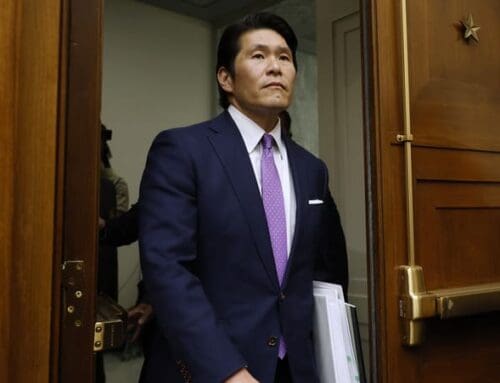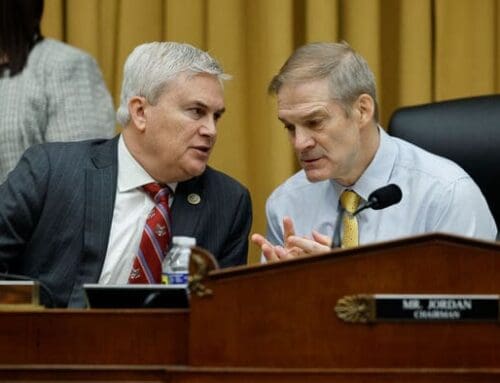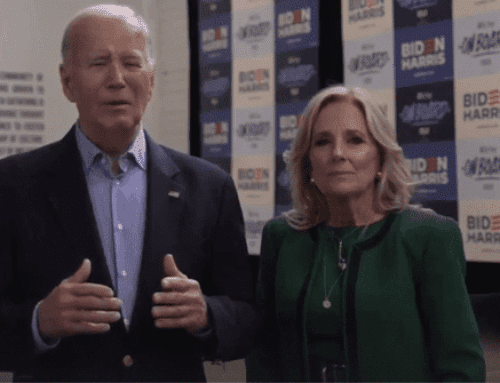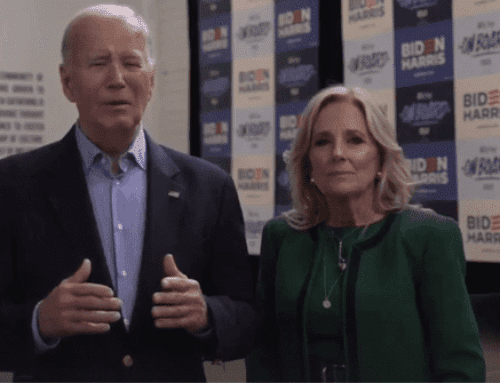

Fake news: history, evolution and consequences of a dangerous “thing”
In thinking about this topic, I struggled to settle upon a noun to describe fake news. The adjective was easy: it is dangerous. But is it an idea, a concept, a strategy? In the end, I settled on that nebulous descriptor, a ‘thing’. As I thought about it, I concluded that this may be the best option, for fake news – as the colloquialism has it – is ‘a thing’.
News in its most basic form is about reporting and relating pieces of information, facts, events, experiences. Individually, we may see any of these as important (or not), but it is when seen in context as a whole that they take on their full significance. This is what we call a narrative. Think of it as a story that gives its individual elements their significance. Or pieces of a puzzle that, when assembled, move from a confusing jumble of elements to a coherent image.
As my colleague Nicholas Lorimer and I have previously pointed out, psychologists have identified a phenomenon known as motivated reasoning. In broad terms, people have a tendency to seek our information that conforms to and supports their views. Within people’s own minds, narratives are often constructed based on a (selective) reading of news and commentary. From that, value judgements arise, where participants and events in a given narrative are assigned moral value. Where these evoke especial emotion, the moral readings can be expected to be extreme and polarising. One only needs to think about a figure like Donald Trump or Jacob Zuma, or something like the vote in the United Kingdom on whether to leave the European Union.
And following this – typically with an imperfect understanding of the dynamics that are being witnessed – it is a short step for people to reflect their very identities based on the narratives and value judgements that they have made. This is more common than we realise, Think about it. I am ANC – not that I support the ANC, mind you. I’m a Trumper. I’m an anti-Trumper. I’m 100% Zuluboy. I’m a socialist. I’m a Christian. I’m a pacifist.
So far, none of this is necessarily threatening. Indeed, it is one of the blessings of a free society that information is abundant and ever more widely available, that we have rights to access it, and the corresponding right as citizens to form and hold opinions.
The challenge is that information can be instrumentalised; used, in other words, to do something other than to inform. Falsehoods or information deliberately distorted or selectively presented can create narratives to steer opinion, value judgements and identity formation with the intent (or effect) of serving particular objectives.
‘Fake news’ in its various iterations is not a new phenomenon, nor does it lend itself to a single interpretation. Nevertheless, there are arguably three cardinal impulses behind it.
Firstly, one impulse is simply to feed an appetite for entertainment – often in the form of a hoax. One of the most celebrated examples of this took place in 1835, when the New York Sun published an account of life on the Moon. This tapped into public curiosity about scientific discoveries from hitherto unfamiliar locales. Its report claimed that a famed British astronomer, John Herschel, had observed freakish giant bats, goat-like humanoids and a temple made of sapphire.
John Herschel did in fact exist, as did his astronomical observations – taking place, coincidentally, in what was then the Cape Colony. The reports, though, were bogus. The Sun pursued readers with great energy, as its revenue was derived from advertising, and thus dependent on circulation. Since Herschel was on the other side of the world, the editors of the paper knew that they would be able to concoct intriguing stories for some time before genuine accounts arrived.
Another such instance was the so-called Surgeon’s Photograph of 1934, purportedly showing the serpentine neck of a large aquatic animal in Loch Ness. The photograph taken by a British doctor, Robert Kenneth Wilson, and published in the Daily Mail, was held up for decades in books, magazines and documentaries as convincing proof of the existence of the Loch Ness Monster. In the 1990s, it was revealed that the photo had been staged as part of a hoax involving one Marmaduke Wetherell, a big game hunter and actor who had previously been hired to track the monster, but had been ridiculed for a hoax he had perpetrated on that occasion. (The photo in fact showed a model submarine with the creature’s neck built onto the conning tower. It was sunk in the Loch and may well still be there.)
Secondly, and more seriously, propaganda has propelled fake news. Note that propaganda is not necessarily ‘false’ and may simply involve foregrounding legitimate information about one’s opponents. During the Cold War, Soviet propaganda produced unpalatable facts of Western, and particularly American, life, such as high rates of crime and drug addiction. Western propaganda stressed the absence of democracy and restrictions on civil liberties in Communist countries.
At times, propaganda veers into the lurid, fantastical and the untrue. One of the most damaging and enduring is the notion of ‘blood libel’. The idea that Jews conducted human sacrifice and ritual cannibalism seems to have arisen in ancient times, but to limited practical effect. However, in 1144 a child named William was murdered in the town of Norwich in England. A convert from Judaism to Christianity, Theobald of Cambridge, reportedly claimed that this was part of a Jewish ritual, and that every year a specific place was chosen for the ritual sacrifice of a Christian child. Protected by the King and Sheriff, the local Jewish community suffered no immediate retribution. However, the case was raised a few years later as a countercharge when a Jewish community demanded justice for the murder of one of their own. William became the subject of the cult, attracting pilgrims, and this generated revenue for the Church.
Meanwhile, the accusations stuck and were levelled against Jews elsewhere in England and then in continental Europe – with children being recognised as martyrs and becoming the objects of devotion and pilgrimage. The last known blood libel trial in Europe appears to have been in Russia in 1911, and the idea lingers among some anti-Semitic groups, Christian as well as Muslim. It is also invoked at times to draw a link between the inherent perversity of Judaism and the abuses of which Israel is accused.
In times of conflict, the importance of information to sway public opinion in support of or against a given position has been recognised since ancient times. ‘We are favoured by the Gods. God is on our side. Our motives are pure and righteous. Those of our enemies are corrupt and malicious. Our conduct is lawful and noble. Our enemies are lawless and rapacious.’
As war came to be conducted on an industrial scale – think here particularly of the 20th Century – the information and communication resources of modern society were deployed to support the political and military efforts.
At times, fiction was melded with cultural beliefs and the imperatives of war efforts. An interesting case study is that of the so-called Angels of Mons. Supposedly, while the British army had been in retreat in the early days of the First World War, celestial beings had interceded to stop the advance of the German army. The implication was clearly that Britain and its army were under divine protection, and their role in history imbued with a mission ordained by God himself.
The story appears to have had its origins in a fictional story of phantom bowmen from the Battle of Agincourt – a seminal moment in English history and part of its national mythology – who had intervened on the British side during the fighting. The author, Arthur Machen, was well known for his supernaturally themed writing. The story was taken up and reprinted by others, and seems to have seeped into popular consciousness as an actual account of events. There were apparently some reports of phantom beings having been sighted, though these were typically described as cavalry, and not as having participated in the action (it’s quite possible that these were either hallucinations or genuine misidentifications of combatants). By 1915, the idea of angels having been sighted had gained momentum. A popular esoteric movement of the time, Spiritualism, seems to have provided some impetus to it, as would church sermons that repeated the claims, as well as the so-called ‘atrocity propaganda’ about the conduct of the German army. Indeed, there are suspicions that the story was in fact encouraged by Britain’s intelligence services.
Another influential and revealing case, closer to our time, concerned the origins of AIDS. In the 1980s the Soviet Union saw in this new and frightening health threat an opportunity to promote suspicion of the West among people in developing countries.
It set about spreading the claim that the United States had deliberately engineered the HIV virus as a bioweapon. In 1985, Soviet intelligence agents informed their allies in the Bulgarian state security agency that they were initiating a new disinformation campaign which would claim that AIDS was the result of an experiment by the US Army Medical Research Institute for Infectious Diseases (USAMRIID) in Fort Detrick, Maryland. They would further claim that the experiment had escaped from the laboratory and that the US military were withholding treatments they had developed. This was disseminated through a KGB-controlled newspaper in India, called The Patriot. The paper published a letter to the editor on its front page making these assertions about the nature and origin of the disease and claimed to quote a ’well-known American scientist and anthropologist’ as evidence.
Subsequently, the East German Stasi organized an academic study which would claim to have found evidence of this, which would be planted in academic circles to support the original story. These measures, along with further dissemination of the story in press outlets which published letters and opinion pieces – allowed the story to be expanded upon. In one instance, Soviet radio claimed that a vaccination project in Zaire was intended to spread HIV.
It even found its way into South African politics: the ANC intellectual Jabulani Nobleman Nxumalo (known in his writings as Comrade Mzala) reproduced these views in the ANC’s journal Sechaba in the 1980s. Some of his arguments – such as the rapacious profiteering of capitalist pharmaceutical firms – would be echoed later by President Thabo Mbeki in his highly controversial stance on AIDS.
Thirdly, there is what might be called the impulse of self-actualisation. This is perhaps the most difficult of the three to link directly to the phenomenon of fake news, but it is a serious consideration. It speaks to a growing cultural trend of seeing one’s own ‘authenticity’ as a standard of reality. This is exemplified in the notion of ‘your truth’.
Reality – or perhaps ‘validity’ ̶ can be understood in relation to oneself and one’s feelings. While in fairness this probably has more to do with interpreting one’s personal experiences that with understanding geopolitical events (for example), it helps to account for and to legitimise seeking out affirmation. It creates a standard in which objectivity is diminished and in which the weight challenging evidence is accorded no more importance than one’s perspective and value judgments.
With these impulses understood, how is fake news practically disseminated?
One obvious answer is that it works in much the same way as any other source of information does. Technology has brought with it ever-expanding universes of information to the societies that have access to them. The printing press, for example, was instrumental in promoting the European Renaissance and the Reformation, with all the socio-political disruption that these processes brought about. The camera, radio, television and so on helped to do the same, but in more vivid and immediate terms.
All of this helped to propel not just awareness around events, but the emotional response to them. New forms of media could engage the senses in a manner that older forms could not. Nazi Germany employed radio to devastating effect as a means of conveying its worldview – the Volksempfänger, the ‘Peoples Transmitter’, was a device specifically designed to ensure a cheap and effective means to bring the Nazi message into people’s homes. This was central to the nightmarish regime’s control strategy. Nazi Propaganda Minister Dr Joseph Goebbels declared in 1933: ‘One must govern well, and good government needs good propaganda’. Indeed, the Nazi Party felt there was nothing pejorative in the use of the term ‘propaganda’, and Goebbels’ ministry was called the Reichsministerium für Volksaufklärung und Propaganda, the Reich Ministry for Public Enlightenment and Propaganda.)
Visual media could take this further. The aphorism that ‘a picture tells a thousand words’ is apposite. The United States’ failure in Vietnam represented a fall-off of domestic support for the war; much of this has been attributed to the ceaseless images of fighting and death conveyed into comfortable living rooms across the country night by night.
Computer technology and social media have taken this to another level. Not only is it possible to get information constantly, delivered to oneself, and effectively tailored to one’s taste, but it has allowed hitherto unimaginable opportunities for people to become content purveyors, if not content producers. In a way, this represents a radical democratisation of the media environment. Gatekeepers have in some respects been done away with – at least in particular contexts – but with that has come the danger of low-quality, sensationalised and not infrequently entirely untrue content.
The latter point raises the other major driver of fake news today, a politico-cultural environment that provides fertile soil for it grow.
Democratisation has not been confined to the media; despite regression in recent years, the world as a whole is freer than it was fifty years ago. Opportunities to participate in public debate – even if not always to effect real change – are vastly more widely available. And across the world, people have taken advantage of this.
But contemporary times are also stressful and polarised. Economic uncertainty claws at the middle and working classes of some of the world’s most prosperous societies. In South Africa, much the same can be said in view of the painful history, current misgovernance and economic malaise.
Polling from various societies shows that trust in established institutions – including the media – is in decline. And political polarisation seems to be on the rise: the sense that one’s fellow citizens are not simply people whose opinions may differ from one’s own but are in some way alien and hostile.
All of this provides a space for populists and operators from the political fringes.
To this add geopolitics. Now probably more than ever, information and influence are currencies of international confrontation. This may involve stirring internal conflict in the societies of one’s opponents, fostering divisions, and undermining confidence in their institutions. Here, social media offers possibilities for the weaponization of information (genuine and fake) that previous generations lacked. In some instances, this is orchestrated by governments, and involves paying activists to spread messages – a study in 2017 identified around 30 governments using so-called ‘troll farms’ or ‘keyboard armies’ for this purpose.
Add to this the impact of a culture in which entertainment and amusement are an exalted goal. The idea of enjoying oneself as an end in itself, and of having leisure time to do so, is a comparatively recent phenomenon in human history. I would suggest that this is now mirrored in the way we consume media. It is not only to inform ourselves, but in a very real sense, to keep ourselves entertained. And where things are presented in a salacious or captivating manner – the clickbait, the burns, the owns, the incredible stories etc – we find ourselves drawn to them.
The outcome of all this is a landscape in which the boundary between truth and falsehood can be very difficult to recognise, if indeed we care to do so.
What does this mean? Leaving aside the ethical question of whether falsehoods are ever acceptable, the effect of fake news can be represented as a continuum of four Ds.
The first is distraction. These are the amusing stories, the hoaxes and humours. Think here of the video footage of an alien autopsy that surfaced in the 1990s in the possession of British musician Ray Santilli. Supposedly proof of the recovery of extraterritorial bodies by the US government, it was later admitted to have been filmed in a flat in London. (Santilli maintained that this film was a ‘restored version’ of an actual alien autopsy…). Things of this nature entertain, spice up our lives and do little real damage other than causing some embarrassment.
The second is distortion. This is essentially what happens when realities are displaced by falsehoods, and is well illustrated by the influence of popular culture on the understanding of history. The central character of James Cameron’s phenomenally successful 1997 movie Titanic was the (fictional) free-spirited artist Jack Dawson, played by a young, telegenic Leonardo DiCaprio. Buried in Fairview Lawn Cemetery in Nova Scotia among other bodies recovered from the sinking of the ship is one J Dawson – Joseph Dawson, an Irish-born coal handler on the ship. The two are unrelated, but for the name; yet the grave and its simple tombstone have been a site of pilgrimage for movie fans paying homage to Jack. Joseph has rather been lost to history.
Closer to home, the 1964 movie Zulu – which depicts the Battle of Rorke’s Drift – has left a rather unflattering portrayal of Private Henry Hook. Hook was known to history for having helped evacuate patients from the mission hospital when it came under attack. He was awarded the Victoria Cross for his efforts. His cinematic counterpart was a ne’er-do-well, a malingerer and a drunkard – ‘a thief, a coward, and an insubordinate barrack-room lawyer’ in one on-screen denunciation – a roguish antihero for whom the action in the Zulu War was a moment of redemption. In fact, Hook had been a prosperous farmer, a lay preacher, was a teetotaller and was by all accounts an exemplary soldier. His daughter walked out of the theatre in protest at the film’s premiere.
Distortion changes the terms of debate, and shifts us away from reality, rather like setting a ship off course.
The third outcome is division. There is a sort of chicken-and-egg dynamic here: are heightened social divisions fostered by a distorted information environment, or do these divisions incentivise fake news? It probably doesn’t really matter how it arises, since we have reached a point where these things drive each other.
The ability to select information in what is practically real-time, and according to each individual’s taste creates a fertile environment for narrative formation in which falsehoods are likely to feature strongly.
The Lincoln Memorial standoff took place at the Lincoln Memorial in Washington DC on 18 January 2019. It lasted no more than a few minutes. It was reflected in a short video on social media as a ‘confrontation’ between a white teenager from Covington Catholic School in Kentucky, Nicholas Sandmann, and an elderly Native American, Nathan Philips. Each had been in the city for a political march, and Sandman was wearing a red ‘Make America Great Again’ cap, a campaign symbol of President Donald Trump.
An initial video appeared on Instagram on the same topic accompanied by the comment ‘The amount of disrespect… TO THIS DAY’. This helped establish the initial narrative of an arrogant, white teenager disrespecting a revered Native elder (a war veteran, no less), an expression of racism that built on a tragic history. However, it was on Twitter that the issue grained traction, both in the US and abroad.
The criticism against Sandmann was often tied to President Trump. New Mexico Congresswomen Deb Haaland, herself of Native America extraction, wrote on Twitter: ‘This Veteran put his life on the line for our country. The student’s display of blatant hate, disrespect, and intolerance is a signal of how common decency has decayed under this administration. Heartbreaking.’ This reflected the state of the country and the leadership of President Trump, she said. ‘You could tell that by the hats they were wearing.’
Indeed, the MAGA hat seems to have been the visual cue for much of the controversy.
A closer viewing of the video (and watching the two hours taken) casts a different light on things. It was Philips who initiated the ‘confrontation’, and made no meaningful attempt at any reciprocal engagement. Sandmann’s response was calm, if confused. Philips also turned out not to have been a veteran of the Vietnam War as was widely reported, although he had served in the military during the latter part of the conflict. Interestingly, some genuinely hateful rhetoric, directed BOTH at Native Americans and at the Covington group was captured in video footage. It a came from a fringe religious sect known as the Black Hebrew Israelites. This attracted very little attention – probably because it fell outside the established narrative.
The rapid rise of the controversy and the subsequent reversal demonstrated the visceral reactions that can be generated by images or symbols. Against a background of sharp political division in the US, this functioned as a sort of Rorschach test – as Zack Beauchamp described it. Beauchamp’s analysis argues that a key factor in the controversy was the MAGA hat, which has come to signify a range of attitudes and assumptions.
The hats extinguished pretty much any benefit of the doubt a liberal observer might have given these kids. Without them, it’s possible many would have dismissed the incident as one of many examples of privileged boys behaving badly. But wearing them, Sandmann and his classmates become a personification of All That Is Wrong With America, proof positive that Trump has ushered in a new dark age in the country. For that reason, the clip was destined to go viral on the left, with Sandmann personally becoming the villain of the hour.
One intriguing matter surrounding the controversy was a Twitter account, @2020fight, which seems to have done a great deal to launch and amplify the divisive narrative on the platform. Having done much to push the matter, it transpired that the image on the account was that of a Brazilian blogger who denied having anything to do with the account. It also tweeted an extraordinary amount of content – around 130 tweets a day, a remarkable rate for someone holding a teaching job, as the account claimed its holder did. A journalist reached out to the account for clarity but was blocked, and when Twitter was informed of the matter it suspended the account. A spokesperson for Twitter said: ‘Deliberate attempts to manipulate the public conversation on Twitter by using misleading account information is a violation of the Twitter Rules’.
Some experts speculated that this might have been a deliberate disinformation campaign, designed to foster division in the US. Professor Whitney Phillips of Syracuse University commented that this incident showed the interaction of social and conventional media in driving conflict. A sensitive issue (racial politics) is presented in an incendiary manner, which draws in the public on social media, which rapidly becomes noticed and reproduced on mainstream platforms.
The fourth and most extreme outcome is destruction. The so-called Facebook genocide in Myanmar (Burma) is a striking example. Military rule began to falter in 2011 when the military ceded some power to democratic reformers. In 2012, due to decades of suppression by the military government, only 1.1 percent of the population used the internet. In 2013, the new joint civilian-military government deregulated Myanmar’s telecommunications and opened the market up to competition from foreign companies. By 2016, around half the population had access to mobile phones, and many of those to the internet. This caused the number of Facebook users in the country to jump from 1.2 million in 2014 to 11 million by 2016, to 18 million by 2018. The shock of rapidly moving from an almost entirely offline society to a heavily online one likely contributed to what followed. For decades, the Rohingya have been treated as an ‘out group’ in Myanmar. They are ethnically distinct from the broader society, being primarily Muslim, while most Burmese are Theravada Buddhists.
Stigmatisation of the Rohingya has a long pedigree, and as more of the country went online, social media became a significant channel for this, carrying numerous false stories aimed at denigrating the Rohingya.
New York Times technology reporter Paul Moyer claimed in 2017 that Facebook had become a major vehicle for incitement against the Rohingya. Facebook, he wrote, was everywhere, even as many people in Myanmar struggled to make their way through normal sites. And much of what was shared was not authentic.
Among the fake news claims commonly spread through social media was that violence against the Rohingya was a myth, as the country’s social welfare minister Dr Win Myat Aye claimed ‘There is no case of the military killing Muslim civilians’. Other Facebook posts claimed that the Rohingya were burning their own villages, and showed doctored or misrepresented pictures claiming to show Rohingya people setting fire to their own homes. Many posts that were put out using the Facebook pages of the Myanmar government or military show bodies of soldiers who may be from other conflicts but claims were made that they were the result of Rohingya attacks.
The military itself invested a great deal into Facebook campaigns and disinformation. Bogus news and celebrity pages were set up to drive its line. There were pages dedicated to approved heroes and lurid stories of atrocities perpetrated by the Rohingya. Online actvists attacked critics, and calls for violence were commonplace.
In this instance, the social media company most involved, Facebook, failed to prevent the abuse of their platform, though the company has since invested heavily in improved algorithms and software to detect hate speech and manipulated media. There are still questions around the effectiveness of this software, which has yet to be definitively proven, and there are also deeper problems related to defining hate speech and fake news, which will be discussed later in this paper. Ultimately, Facebook’s failure to act against fake news bears much of the blame for the role of social media in the violence. This applies both in respect of community and state-driven violence. The excitement and novelty of the communications technology and social media platforms layered over religious and ethnic conflicts that have been ongoing for centuries created a toxic mix. The population was ready and willing to believe fake news narratives as they complemented long-held beliefs and identity narratives held by people in Myanmar. Additionally, the state was itself actively backing the fake news narratives and prosecuting journalists who reported otherwise.
So, what does this all mean?
The degradation of debate through the undermining of the information base makes reasoned engagement difficult if not impossible. Compounded with the modes of engagement encouraged by social media, the very foundations of democratic citizenship are being eroded.
The American scholar Jonathan Haidt has written: ‘A democracy cannot survive if its public squares are places where people fear speaking up and where no stable consensus can be reached. Social media’s empowerment of the far left, the far right, domestic trolls, and foreign agents is creating a system that looks less like democracy and more like rule by the most aggressive’.
One of the other participants on this panel enjoined us to care about fake news because of the danger it poses to democracy. I heartily agree. But let me leave you with this final thought. Steve Tesich, a left-leaning playwright, spoke eloquently to the fake news phenomenon in the early 1990s when he argued that what we were seeing was not merely the manipulation of public opinion by powerful interests, but a cultural moment in which many of us were complicit in our own misinforming. He wrote: ‘We came to equate truth with bad news and we didn’t want bad news any more, no matter how true or vital to our health as a nation. We looked to our government to protect us from the truth.’
Today we may look to government to do so, to restrict those things that make us uncomfortable. Or we may seek solace in in our echo chambers and in comforting lies. And many seem to prefer the idea of a benevolent strongman to the messiness of democracy or the staid limits of constitutionalism.
So, do we not need to introspect about our own role in enabling fake news?
This essay is based on a presentation to a Webinar hosted jointly by the Institute of Race Relations and the University of the Free State’s Department of Political Studies. It also draws heavily on a paper written by Terence Corrigan and Nicholas Lorimer last year, Fake News: A New Challenge To Human Rights?. A recording of the webinar is available here.








